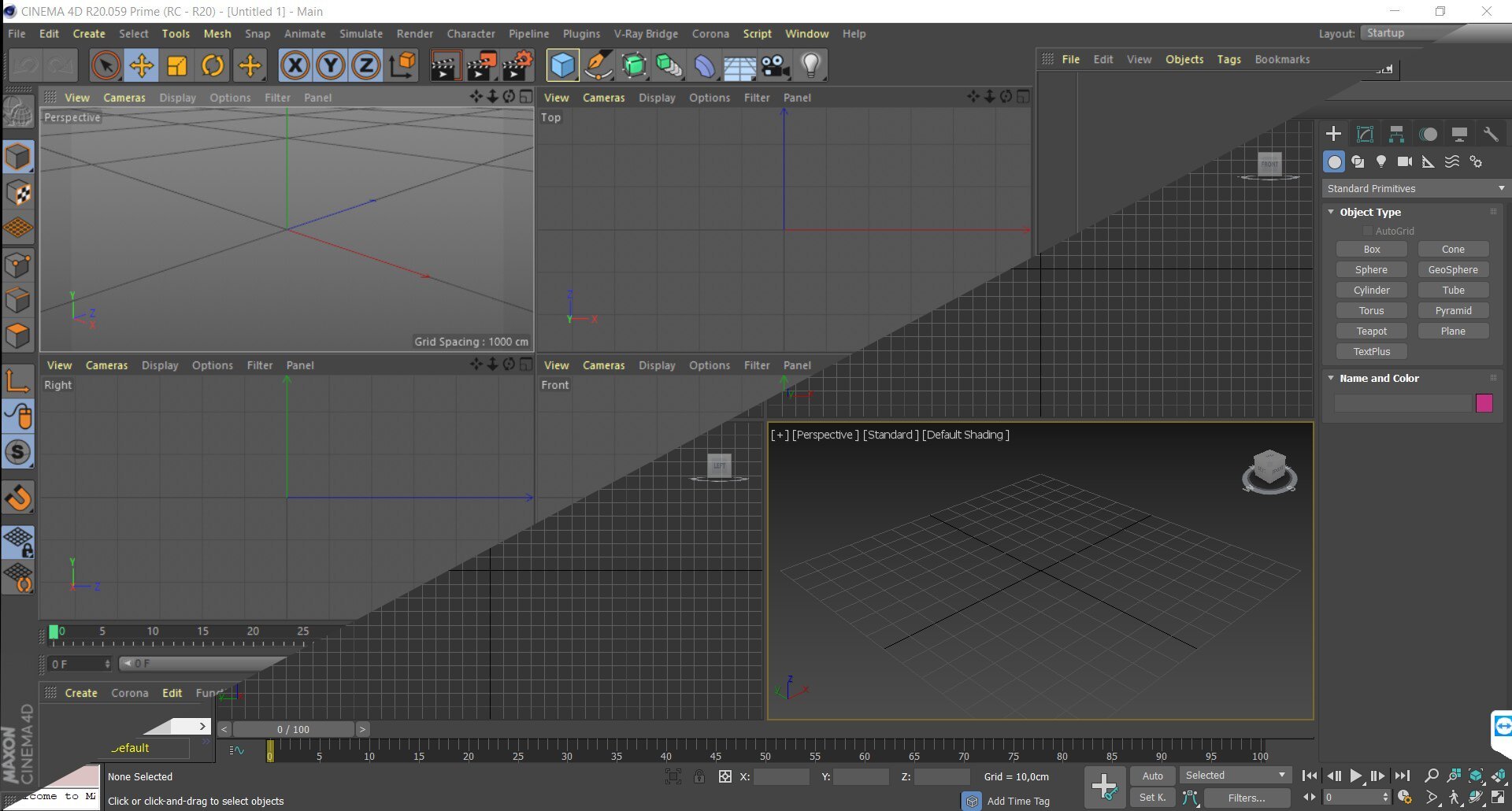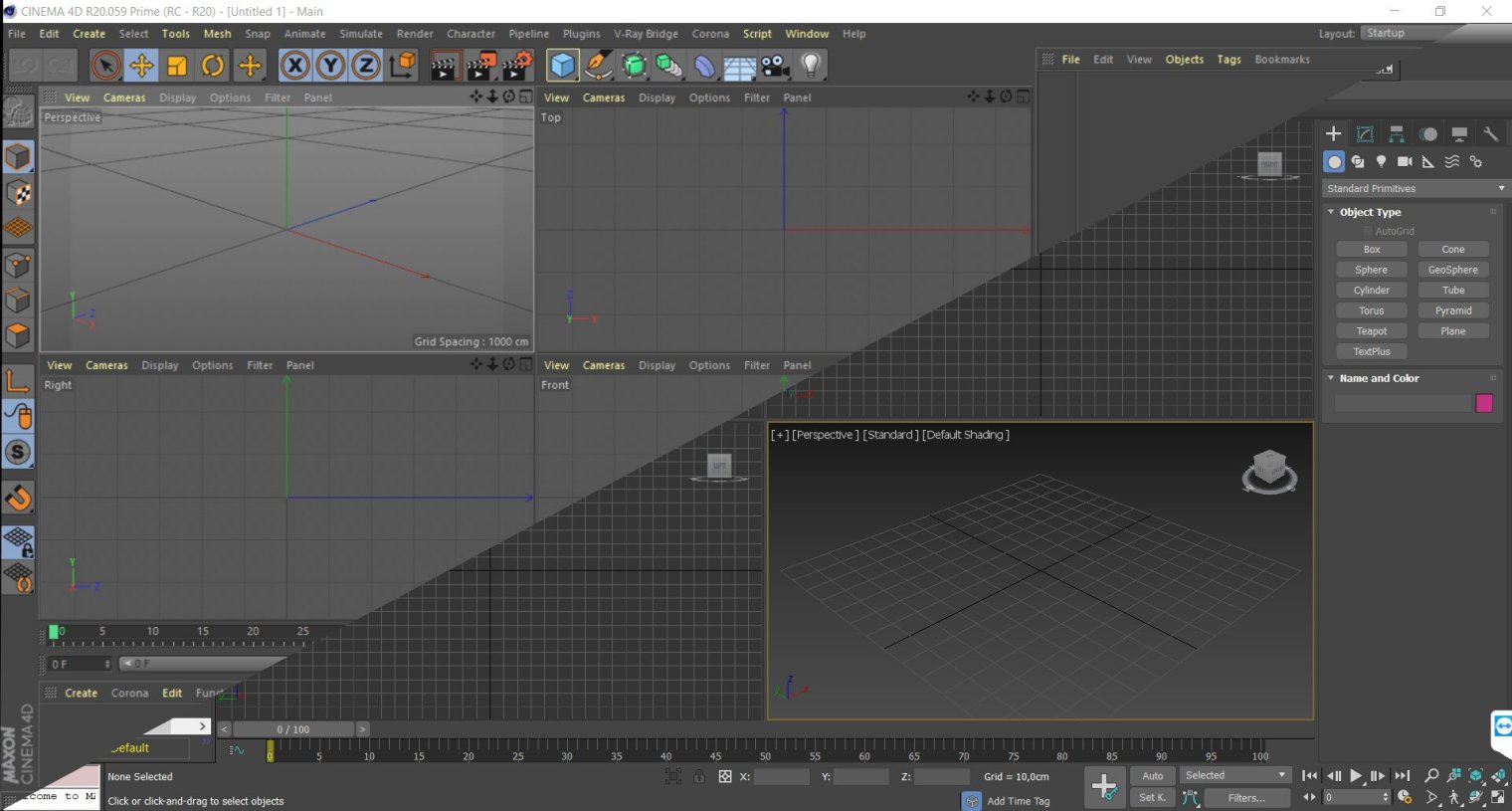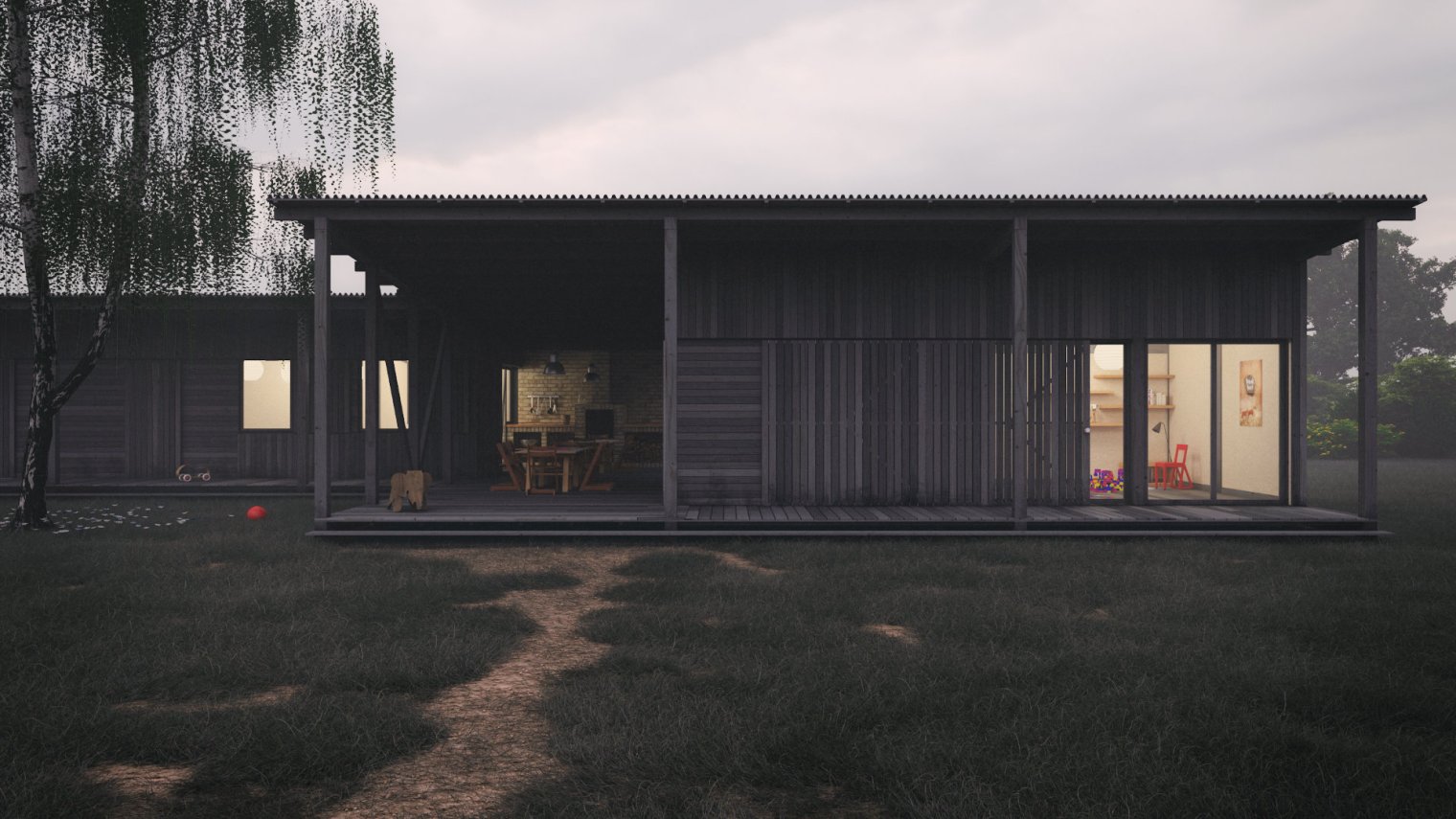Migrating from 3ds Max to Cinema 4D in professional arch-viz – Part 1
Comparing 3d Max's and Cinema 4D's context, learning curve, UI and workflow

I've been using 3ds Max for more than 12 years for architectural visualization, in different contexts. I've worked with the software as a team player at various arch-viz studios, as well as visualised my own and other architects' designs as a student of architecture. I've also run intensive arch-viz workshops for companies, teaching 3ds Max. After starting my business doing professional architectural visualization I had to revise the tools I used in my workflow from a financial perspective, since being dependent on 3ds Max – one of the most expensive 3D software of all – was a luxury I wanted to validate I can't get around. Being already an advanced user of Corona Renderer, the next strong alternative was Cinema 4D, which also supported Corona (even though it was in beta at that time). Cinema 4D versions' flexibility was also very appealing, the basic, yet also powerful 'Prime' edition being roughly one-sixth the price of 3ds Max. Cinema 4D recently changed its licensing having one package only, still selling one-third the price of 3ds Max.

/…/ being dependent on 3ds Max – one of the most expensive 3D software of all – was a luxury I wanted to validate I can’t get around.

At the time I started migrating from 3ds Max to Cinema 4D, there weren’t many guidelines or opinions shared on the subject. Today I’m using Cinema 4D and Corona Renderer in all projects I’m working on, and couldn’t be more satisfied I made the change. Whether I’m using 3ds Max or Cinema 4D, software puts no limit on the quality of my work. I’m also running a Cinema 4D training for visualization with 3dhome, a Maxon-certified training institute in Budapest, Hungary. I’m sharing my experience on the migration process, that may help you evaluate if migrating from 3ds Max to Cinema 4D was also beneficial, and effort-worthy for your business.
Comparing 3ds Max’s and Cinema 4D’s context of creation and use
Understanding how 3ds Max and Cinema 4D were designed and created may help us comparing their primary use cases, ease of use, and other important aspects.
3ds Max’s predecessor, the 3D Studio was released in 1990. The idea of creating 3ds Max (3D Studio) wasn’t primarily driven by business objectives at start, but rather the curiosity of some of its initial developers to make a more capable 3D animation software. Autodesk entered 3ds Max’s development quite early, but the software’s progression was primarily dictated by its core developers’ ideas and experimentation in early days. Adding features to the software was always, and still is somewhat organic, which resulted in an ultra-capable, yet bloated 3D package, used in so many industries. If you’re interested in software’s history, you can read this interview with Tom Hudson, one of 3ds Max’s initial main developers.

The idea of creating 3ds Max (3D Studio) wasn’t primarily driven by business objectives at start, but rather the curiosity of some of its initial developers to make a more capable 3D animation software.

Cinema 4D’s beginnings also root back to the early 90’s. However, Cinema 4D’s predecessor, FastRay wasn’t a full-fledged 3D package, but rather a renderer. First versions of the software with a GUI were released only years later. The more business-driven and careful development attitude helped defining stricter feature scopes, with a more designed progression from release to release. Cinema 4D’s development is also characterized by a modular approach, meaning complex software components and feature sets can be detached or added to the software. This approach enabled Maxon to provide different versions of the software to different industries, which is – from September 2019 – no longer the case.
Both 3ds Max and Cinema 4D has an ultra-wide feature set, with a significant overlap. However, both software also have their niche industries, where they’re extremely popular – e.g. video game artists prefer 3ds Max for its modeling tools, while motion graphics artists often choose Cinema 4D instead primarily for its MoGraph module. In case of arch-viz use, 3ds Max is more popular in most countries – especially in areas where Autodesk software packages dominate in AEC. Cinema 4D is often used in Western European countries though, where use of Graphisoft ArchiCAD is common among architects and designers (ArchiCAD being owned also by Nemetschek, the company behind Maxon Cinema 4D).
Comparing 3ds Max and Cinema 4D’s learning curve for arch-viz
Maybe because of how the software were designed and created in their early days (see above), 3ds Max is probably more difficult to learn on a professional level than it is to learn Cinema 4D. Many 3D artists – including myself – actually think, Cinema 4D is the easiest professional 3D application to get started with, because of its streamlined user interface, and more logical grouping of its features. What I especially like in Cinema 4D is, that just by studying UI you find almost all of its features usually paired with an icon, and there’s much less going on hidden, behind the scenes.

Maybe because of how the software were designed and created in their early days (see above), 3ds Max is probably more difficult to learn on a professional level than it is to learn Cinema 4D.
Migrating from 3ds Max to Cinema 4D is the easier learning path to take, when compared to vice-versa. Supported by knowing what you’re looking for, you’ll go from the more complicated software to the less. When having a solid knowledge of 3ds Max, and learning Cinema 4D, it’s a good practice to search for similarities, and mindfully notice differences. Without going into detail with each, I’m listing some major examples:
- 3ds Max has five poly sub-object levels (Vertex, Edge, Border, Polygon, Element), while Cinema 4D only has three (Points, Edges, Polygons).
- 3ds Max has a linear Modifier Stack, while Cinema 4D has Generators, Modeling, and Deformer commands (objects), that has a meaningful hierarchical arrangement.
- 3ds Max has Isolate Selection, Cinema 4D has Viewport Solo modes.
- Both software has a Layers Manager. However, in 3ds Max it’s likely more important, being the primary way to organize your entities. Cleverly using Cinema 4D’s Object Manager already gives a logical structure to your scene, leaving the use of Layers Manager somewhat optional. Many arch-viz studios work by ignoring Layers Manager in Cinema 4D altogether.
- In 3ds Max lots of object properties are basically visually hidden on the UI. Not in Cinema 4D, where most object properties can be added visually, by the corresponding Tags.
- In polygon modeling, 3ds Max can be used to model completely ‘non-destructively’, by extensive stacking of ‘Edit Poly’ modifier. Not with Cinema 4D, where – ‘Edit Poly’s’ alternative – the Correction Deformer is limited to basic commands without poly-count change.
- 3ds Max has Multi/Sub-Object Materials and Material IDs for poly-level material assignment, while Cinema 4D has Selection Tags.
Comparing 3ds Max and Cinema 4D’s user interface for arch-viz use
3ds Max is often criticized for its bloated and rigid user interface, that hasn’t changed a lot over the many years of its development. 3D artists learn where to look for fundamental commands by training and practice, rather than intuition. The user interface is somewhat fragmented into lots of different panels and popups, often overflowing your display, making it hard to find what you’re looking for. Autodesk – being aware of this – puts a lot of effort to improve 3ds Max’s UX and UI, user interface changes being fundamental selling points of recent years’ new releases. Think about the ‘Ribbon’ with ‘Graphite Modeling Tools’ added some years ago, and the fully re-designed look and feel launched with version 2017.
Users find Cinema 4D easier to learn for a reason. When compared to 3ds Max’s, Cinema 4D’s UI feels just friendlier, having less clutter on the screen at a time. Almost all tools have a descriptive icon, making commands’ outcomes less abstract for beginners. The Object Manager shows a clear overview of your scene at all time, giving so many information at a glance. (It’s a good idea to use it intentionally though, and keep your hierarchies organized, otherwise it’ll go against you.) What I like most in Cinema 4D’s UI is that it operates with much less action-specific popups and windows than 3ds Max, using Attributes Manager with an extreme level of versatility, on a standardized manner. If you get a grip of it, all tools seem familiar even when using them the first time.

Bringing your 3ds Max-based arch-viz workflow to Cinema 4D
The number of ways how you can use 3ds Max for architectural visualization efficiently is endless. Arch-viz professionals build different 3ds Max workflows, based on the specifics of their niche, the size of their team, etc. The workflow-flexibility isn’t specific to 3ds Max though, Cinema 4D (and other 3D software in general) providing so many different ways to be used for arch-viz. However, there’re some important differences to note if you plan migrating from 3ds Max to Cinema 4D.
Even though 3ds Max is a capable application, when it comes to arch-viz, you’ll find it does lack some rather basic features by default. Chances are, you aren’t aware of this, since by using third-party plugins and scripts, all sorts of basic, and hugely specific features can be easily added, making up for the shortcomings. Think about Soulburn Scripts – a script package containing basic actions – that lots of arch-viz artists hugely depend on in their workflows. Or missing advanced scattering tools for adding repetition, like the third-party Forest Pack, or scattering solutions coming with external renderers (e.g. Corona Scatter). Without these tools 3ds Max is basically doomed.

Even though 3ds Max is a capable application, when it comes to arch-viz, you’ll find it does lack some rather basic features by default.
Cinema 4D – having a smaller arch-viz user base – has consequentially much less high-quality third-party plugins. However – as you start discovering Cinema 4D –, you’ll be surprised how much of 3ds Max’s missing arch-viz tools are present in just the core package. Robust alignment, naming, object and scene management, as well as optimization tools are all there. When it comes to scattering, Cinema 4D has you covered with its award-winning MoGraph toolset. The software also has a highly usable 3D asset library for arch-viz, with detailed 3D models of architectural elements, furniture, props, and even sample scenes. A professional arch-viz workflow can be entirely based on Cinema 4D’s core features only, without literally using any third-party plugins (other than an external renderer). Relying on the core 3D software only comes with so many advantages – like the maintenance reliefs, the undependency and unspecificity of your scenes, and the portability of the tool itself.
Summing up and introducing part two
3ds Max is still the most popular 3D application in professional arch-viz by far, and chances, are, you haven’t ever thought of trying something new, or migrating to a different software. However – for whatever reason – if you do so, now may be a good time to experiment with, or migrate to Cinema 4D. The software has a smooth learning curve, a nice UX and UI, and a complete feature set for arch-viz without the need of third-party plugins. Popular renderers in arch-viz – like Corona Renderer or V-Ray – are already available in their commercial versions for Cinema 4D too, with almost 100 percent feature parity to their 3ds Max counterparts.
I hope the above showed you a solid overview what it likes to migrate from 3ds Max to Cinema 4D, and gave courage and mood to try the former. In part two, I’ll go into more detail in comparing different parts of the workflow in 3ds Max and Cinema 4D – like modeling, shading, lighting, and rendering – and also have look on some other important aspects of doing arch-viz, like finding 3D assets for the software.
Author
Márton Lente
I am Márton Lente, a designer and creative web developer from Budapest, Hungary. I have a formal education in architecure and design, and multiple years of experience in front-end, and CMS web development. Read more.



